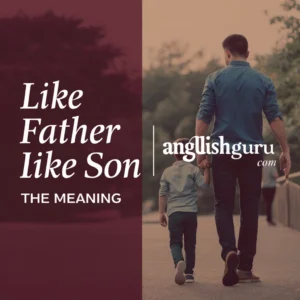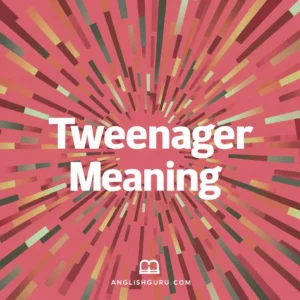When people encounter the term “oppai”, it often sparks curiosity, amusement, or even confusion. While its direct translation from Japanese is quite straightforward, its cultural meaning, nuances, and usage in everyday speech or media make it far more layered. In casual anime references, memes, or conversations, “oppai” is widely recognized. But if you want to use it (or avoid using it) properly, it’s important to understand what it conveys, how it’s perceived, and what alternatives exist in formal, polite, or casual contexts.
This article explores the meaning of oppai, provides 18+ insights into its usage, and offers various alternatives for expressing similar ideas—ranging from professional to casual tones. We’ll also connect this to how people navigate language shifts online, especially in text, where phrases like “asl meaning in text” (age, sex, location) demonstrate how shorthand evolves across cultures.
Whether you’re studying Japanese, engaging with anime culture, or simply want to broaden your communication skills, this article will give you comprehensive explanations, polite expressions, and real-life texting examples you can use with confidence.
What Does “Oppai” Mean?
At its core, “oppai” (おっぱい) is a Japanese colloquial term that directly translates to “breasts” in English. However, unlike the more clinical or anatomical English term, “oppai” carries a softer, playful, and often affectionate tone.
- In anime and manga, it is often used humorously or flirtatiously.
- In casual Japanese conversation, it is considered slang and informal, not appropriate for professional or serious settings.
- It is comparable to saying “boobs” in English—familiar, lighthearted, but not formal.
Understanding these nuances of tone is key: what feels humorous in one context can feel disrespectful in another.
Why Context Matters
Language is always tied to social context. For example, just as “asl meaning in text” makes sense in online chatrooms but would confuse people in a formal letter, “oppai” is acceptable in casual or pop culture settings but unsuitable in business or academic ones.
If your goal is to navigate language more professionally—or simply avoid awkward situations—you should know alternatives that suit different tones:
- Formal / Professional alternatives
- Polite / Neutral alternatives
- Casual / Playful alternatives
18+ Alternatives to “Oppai” (Depending on Context and Tone)
Below are carefully selected expressions that work across a range of tones. Each alternative comes with an explanation and example usage.
1. Breasts (Formal / Neutral)
The most standard English term, widely understood and medically accurate.
- Nuance: Neutral, professional, suitable for healthcare or biology contexts.
- Example: “The doctor explained the importance of regular breast health checks.”
2. Chest (Polite / Neutral)
A softer, less direct term often used in professional or polite discussions.
- Nuance: More respectful, avoids slang.
- Example: “She placed her hand on her chest to calm her breathing.”
3. Bust (Semi-Formal / Fashion Context)
Often used in clothing or measurement contexts.
- Nuance: Neutral, fashion-related, avoids casual slang.
- Example: “The tailor took her bust measurement for the dress fitting.”
4. Cleavage (Casual / Descriptive)
Refers specifically to the visible space between breasts.
- Nuance: Casual, descriptive, context-sensitive.
- Example: “The design of the dress highlighted her cleavage.”
5. Bosom (Poetic / Polite)
An older, more literary word that carries warmth and respect.
- Nuance: Formal, poetic, often used metaphorically.
- Example: “She welcomed her child into her bosom.”
6. Upper Body (Very Formal / Neutral)
A completely neutral way to describe the area.
- Nuance: Very polite, avoids any slang or casual undertones.
- Example: “The workout routine focuses on strengthening the upper body.”
7. Torso (Anatomical / Neutral)
A body-centered description, more clinical.
- Nuance: Anatomical, respectful, medical tone.
- Example: “The injury was located in the torso area.”
8. Pecs (Fitness / Neutral-Casual)
Used especially for muscles in men, but can be applied neutrally in workouts.
- Nuance: Gender-neutral in fitness discussions.
- Example: “He’s been working hard on his pecs at the gym.”
9. Figure (Polite / General)
Indirectly,, respectfully refers to body shape.
- Nuance: Gentle, polite, not slangy.
- Example: “She has a graceful figure.”
10. Front (Polite / Indirect)
Sometimes used euphemistically to avoid direct wording.
- Nuance: Very soft and indirect.
- Example: “The design has buttons down the front.”
11. Curves (Playful / Complimenting)
Used positively, focusing on attractiveness.
- Nuance: Playful, polite when phrased carefully.
- Example: “She looked stunning, showing off her natural curves.”
12. Silhouette (Artistic / Polite)
Used in design, photography, or art.
- Nuance: Creative and polite.
- Example: “The silhouette in the painting was elegant.”
13. Torso Shape (Professional / Neutral)
Used in anatomy or clothing discussions.
- Nuance: Professional and descriptive.
- Example: “Different torso shapes require different fitting styles.”
14. Physique (Neutral / Compliment)
General word for body build.
- Nuance: Complimentary without being casual.
- Example: “He admired her athletic physique.”
15. Bustline (Fashion / Formal-Casual)
A fashion industry-specific term.
- Nuance: Neutral, precise.
- Example: “The dress has an empire waistline above the bustline.”
16. Torso Front (Clinical / Neutral)
Very direct and descriptive in medicine or anatomy.
- Nuance: Professional, avoids casual tone.
- Example: “The pain extended across the front.”
17. Décolletage (Formal / Fashion)
Borrowed from French, used in fashion.
- Nuance: Elegant, formal, artistic.
- Example: “The gown emphasized the décolletage area gracefully.”
18. Body Shape (Neutral / General)
Broad and safe, suitable for any context.
- Nuance: Safe and polite.
- Example: “Body shape varies from person to person.”
Choosing the Best Alternative
- Formal/Professional Settings → Use terms like breasts, bust, chest, torso.
- Polite/Neutral Settings → Use figure, silhouette, physique, body shape.
- Casual/Playful Settings → Use curves, cleavage, pecs.
Always match the word with the tone of the situation to avoid misunderstandings.
11 Texting Examples (Polite, Casual, Professional)
Here are user-friendly examples showing how people might reframe language naturally in texts:
- Formal: “I read an article about breast health awareness. Really important.”
- Neutral: “I need to get my chest size measured for the new suit.”
- Casual: “The anime had so many oppai jokes, I couldn’t stop laughing.”
- Playful: “That dress really shows off your curves—looks amazing!”
- Respectful: “She held the baby close to her bosom.”
- Professional: “The workout today focused on torso strength.”
- Fashion-Oriented: “They adjusted the bustline to fit better.”
- Lighthearted: “Anime fans love making oppai references, haha.”
- Artistic: “The silhouette in that photo was so striking.”
- Clinical: “He described pain in the upper body area.”
- Friendly Casual: “Lol, classic anime humor—another oppai scene.”
Final Thoughts
Language is never just about direct translation—it’s about tone, context, and respect. The word “oppai”, while common in Japanese slang and anime culture, should be used carefully outside of those casual settings. Thankfully, English provides a wide range of alternatives—from formal to playful—to help you express yourself with the right balance of clarity, politeness, and nuance.
By understanding these expressions and when to use them, you can navigate conversations more smoothly, whether in professional discussions, everyday chats, or even playful online banter. Just as “asl meaning in text” carries meaning in its context, so does “oppai”—and learning the alternatives ensures you communicate effectively across cultures and settings.





